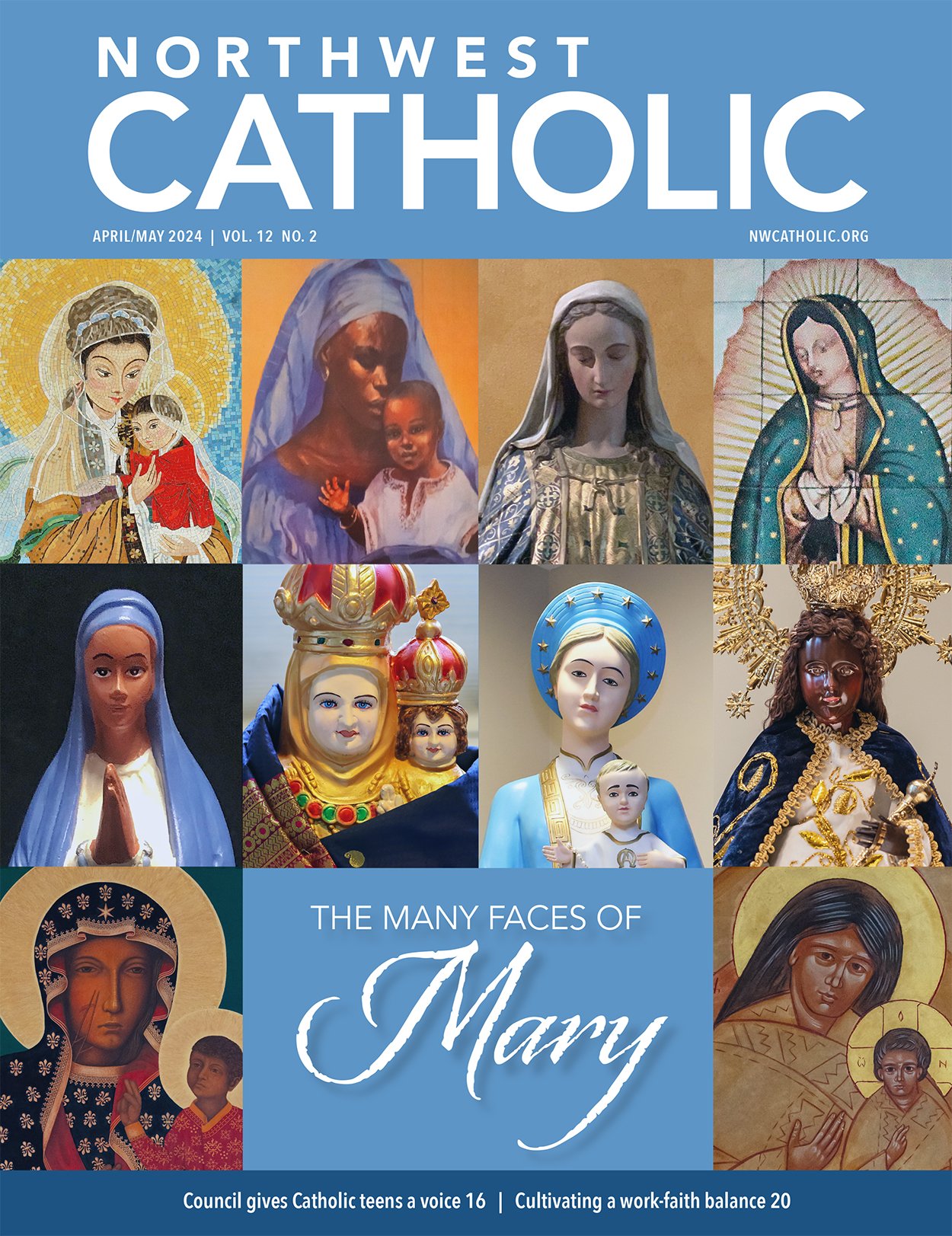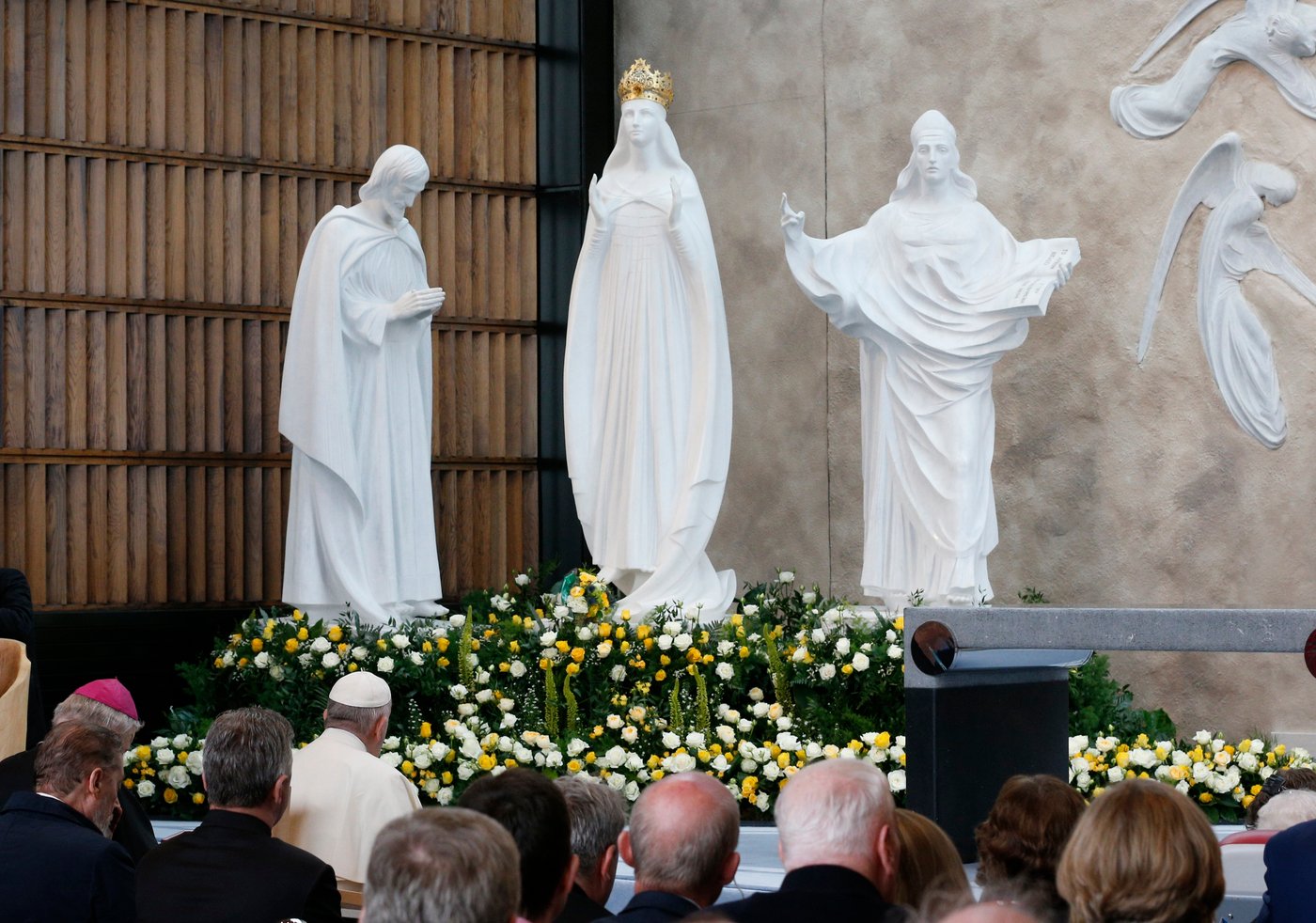The Many Faces of Mary

In the April/May issue of Northwest Catholic magazine, we shared some of the apparitions and images of the Virgin Mary that inspire devotion in the Archdiocese of Seattle’s many Catholic cultural communities. We didn’t have room for them all, so you’ll find more of these special devotions below.
Our Lady of Knock | Feast Day: August 17

On the rainy evening of Aug. 21, 1879, villagers in Knock, Ireland, saw an apparition surrounded by a brilliant white light on the gable wall of their church: the Virgin Mary dressed in white robes and wearing a gold crown bearing a single golden rose; St. Joseph on her right, bowing respectfully; and St. John the Evangelist on her left.
Unique to this apparition was the presence of the Eucharistic Lamb standing on an altar in front of a cross, surrounded by angels.
Men, women and children watched and prayed while the apparition lasted for about two hours. Fifteen official witnesses to the apparition gave their testimony to an inquiry commission in October of that year.
News of the apparition was reported in national and international newspapers and pilgrims began coming to Knock; organized pilgrimages began as early as 1880, the year after the apparition.
In 1976, the Church of Our Lady, Queen of Ireland was completed; in 1979, St. Pope John Paul II visited and elevated it to the status of a basilica. In 2021, Pope Francis recognized Knock Shrine as an international Eucharistic and Marian shrine. Today, more than 1.5 million pilgrims visit the shrine annually.
Source: Knock Shrine
Our Lady of Lebanon | Celebrated May 15

The sanctuary to Our Lady of Lebanon in Harissa, Lebanon, was established in 1904 by Maronite Patriarch Elias Hoayek and the apostolic nuncio to commemorate the 50th anniversary of the dogma of the Immaculate Conception, declared by Pope Pius IX in 1854.
Dedicated in May 1908, the shrine features a nearly 28-foot-tall, white-painted bronze statue of Mary with outstretched arms. She is enshrined more than 1,800 feet above sea level on the mountain of Harissa, overlooking the Bay of Jounieh. The statue sits on a 65-foot-tall pedestal; a staircase with 104 steps leads to the base of the statue.
Our Lady of Lebanon, in the care of the Congregation of Lebanese Maronite Missionaries, draws thousands of pilgrims from around the world all year. Every day during May, praying pilgrims process with candles, flowers and incense, traveling about 4 miles from the coastal town of Jounieh to the shrine. Both St. John Paul II and Pope Benedict XVI visited the shrine and adjacent basilica.
In the U.S., the Basilica and National Shrine of Our Lady of Lebanon is located in North Jackson, Ohio. A chapel dedicated to Our Lady of Lebanon was consecrated in 2012 at the Basilica of the National Shrine of the Immaculate Conception.
Sources: ololb.org/content/history-information, Alia Abboud
Our Lady of Mount Virgin

This image of Our Lady of Mount Virgin (Madonna of Montevergine) has been important to Italian Catholics in the Archdiocese of Seattle since the early 1900s.
The local image traces its roots to 1906, when Mother Frances Cabrini asked Bishop Edward J. O’Dea for an Italian-speaking priest to help assist with the giant wave of Italian immigrants coming to Seattle.
Father Pasquale Sagese was the first Italian-speaking priest assigned to the Seattle area. He traveled by horseback to 15 missions to say Mass. In 1914, Jesuit Father Ludovico Caramello began ministering to local Italian Catholics. He spearheaded construction of Our Lady di Monte Vergine Church (later translated to Our Lady of Mount Virgin and now closed) and a school on the same site where a small church for German Catholics was built earlier. The image apparently was brought from Italy while Father Caramello was pastor.
The original Madonna of Montevergine is an icon enshrined in the Sanctuary of Montevergine in Mercogliano, Italy, where about 1.5 million pilgrims visit each year.
The local image is a variation of the icon, but shares some traits, such as Mary’s right hand pointing toward Jesus.
Sources: Catholic Northwest Progress, santuariodimontevergine.it, Seattle Historical sites, Cristina Zappoli Ryser, Father Paul Magnano and Angela, Bruno and Joe Peranzi.